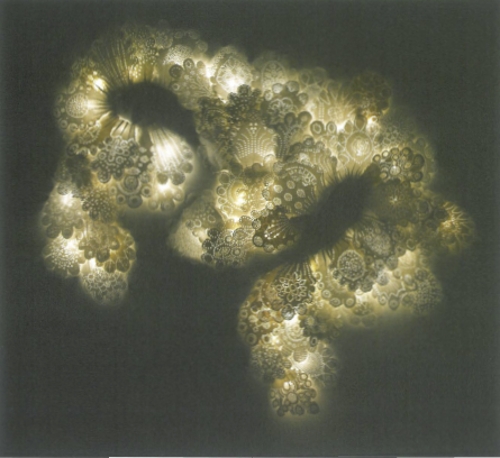Twenty is an account of a generation of artists, a record of the achievements of one gallery in Sydney's volatile exhibiting scene, but at its heart it is an example of how the arts this country continue to be enriched by the energy and imagination of those who support artists as well as those who make art.
The story is there in photographs and text. The young Gene and Brian Sherman came to Australia from South Africa, because their families' histories meant they could not live comfortably in any country that defined people by race.
They had few assets, except for their education. Gene studied and taught French, and in this context came to know the Zimbabwe-born Celia Winter-Irving, who owned the Irving Sculpture Gallery in Glebe. When Winter-Irving returned to Zimbabwe, Gene took over the gallery. It moved to Paddington, first in Hargreave street, and now in Goodhope Street.
Twenty years on it is now the subject of this elegant (and weighty) volume.
The essays and interviews underpin why Sherman has been, and continues to be, of such cultural significance to this country. No other commercial gallery has initiated such a self-confident dialogue with Asia, working to bring Asian-Australian artists within the local mainstream while at the same time exhibiting Australian artists in Asian countries. At the same time Sherman continued a close connection with the more traditional Australian cultural links with Europe and the USA, and also tapped into the energy of the new generation of Australian Indigenous artists.
In this venture the gallery was aided by William Wright, who became Gene's business partner after a long involvement with the Art Gallery of New South Wales and the Biennale of Sydney. Bill has now retired to the University of Sydney where his ability to engage with artists makes him a valuable research tool. One of the more enlightening chapters is the extended interview with Wright, conducted by his long time friend and colleague, Tony Bond.
This is a reminder that the Sherman story and the Sherman success is in part built on an understanding that networks can be friends.
Tony Bond's wife is the sculptor Anne Graham, an artist who exhibits with Sherman. Wright's great gift to the Australian arts community is his ability as cultural 'glue'. He brings people together so that they can make art, show art, and see art. When this gift was taken out of the public sector and given a commercial application people were also shown how they could buy art. The inter-connecting dance of friendships is seen again in the essay by Leon Paroissien on the involvement of Australian art with biennales, both here and abroad. This is a reminder, if any were needed, that the significance of contemporary art moves way beyond the aesthetic and into the realms of the cultural and indeed that crudest of all measures, commerce. In other words cultural connectedness is linked to national prosperity.
One of the interesting aspects of the Sherman curatorial journey is how easily this gallery keeps its contemporary focus. Because the act of working as an artists' agent has to be one of personal passion it is all too easy for galleries to keep to the work of one generation. Sherman's talent is one of constant renewal. Michael Desmond's essay is a reminder of the complexity of that process. The current cohort includes Guan Wei, who can find whimsy in the most heart-breaking cultural dilemma; Mike Parr, the Grand Old Man of angst; Lynne Roberts-Goodwin, who turns exotic adventures into fine-grained photographic fragments; Shaun Gladwell, skateboarding and videos' Mr Cool; Janet Laurence, who makes sculptural form out of glass; Gordon Bennett, the most intellectually rigorous of the new generation of Aboriginal artists; and the one he has most effectively appropriated – Imants Tillers, the great appropriator. All the artists are celebrated here in glossy portraits, as well as examples of their work.
The gallery's support for these artists makes their stellar careers appear almost seamless, but of course it is not. All is underpinned by sound management, impeccably researched catalogues, and an openness to new ideas and the 'fresh blood' of young staffers. The other secret of their success lies in generosity. The Shermans understand the value of education, of nurturing the young and the new. Artbox and Two Cubes are miniature spaces where talented newcomers can strut their stuff to an appreciative audience, while the next generation of arts administrators are supported with Gene and Brian Sherman Scholarships.
The book is large, but not overlarge for it covers a great deal: art, life, photography, essays, interviews. And above all it is a celebration on an occasion when there is a great deal to celebrate.












